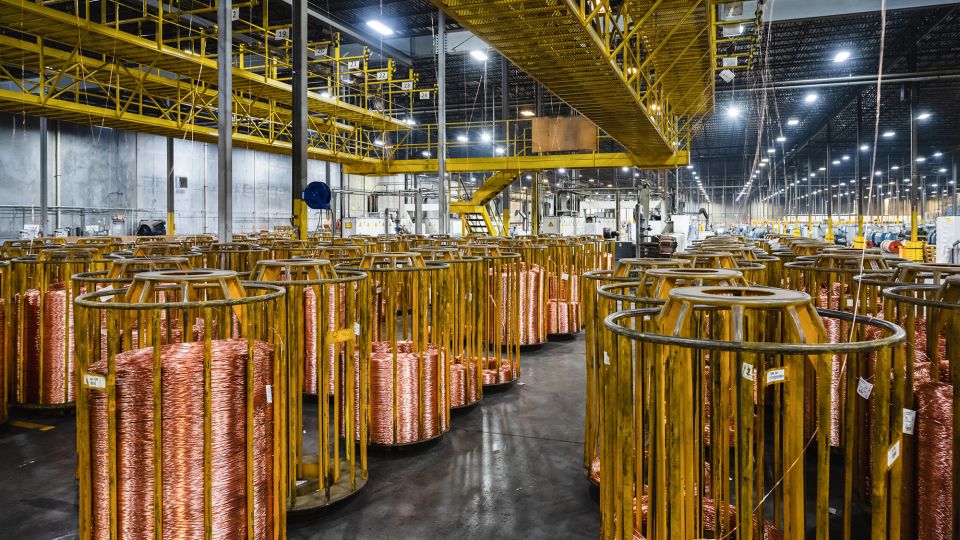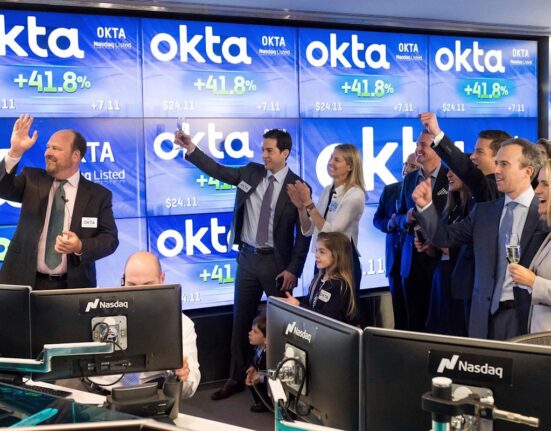Copper is at the core of the American economy. It’s in the wires of our pervasive electronics, in the walls of homes and in the engines of cars. Experts say President Donald Trump’s plan for tariffs on the red metal could stymy the goal of boosting American manufacturing while potentially igniting inflation.
Trump’s July 8 announcement of a 50% tariff on copper imports beginning August 1 sent prices surging 13% in one day, up to a record high of $5.69 per pound.
It was the biggest single-day increase in copper prices on record going back to 1968, according to FactSet.
And those prices could just be a sign of things to come. A 50% tariff would be a “massive tax on consumers of copper,” Ole Hansen, head of commodity strategy at Saxo Bank, said in a note.
While Trump says his copper tariff is needed to spur domestic production due to national security concerns, there is no quick fix.
The US imports over 50% of the copper it needs, primarily from South America, Hansen said, “with no clear path to improving that for years to come.”
That’s because it takes almost 32 years, on average, from the discovery of mineable copper in the US to production, according to S&P Global Market Intelligence. And the end result of a big and fast copper tariff could simply be higher prices for many items, economists say.
“A tariff-induced price premium risks making copper—and by extension, US manufacturing and infrastructure—materially more expensive,” Hansen said.
Copper is highly conductive, making it a critical input for electrical and electronic products. Copper can be found in the chips in mobile phones, plumbing in houses and in the engines of cars.
“This is a vital metal for everyday use,” Rob Haworth, senior investment strategy director at US Bank’s asset management group, told CNN. “You probably don’t go a day where you haven’t used something that has copper in it.”
As Trump’s self-imposed August 1 tariff deadline approaches, businesses and investors don’t know what will happen in the wake of a massive tariff on a key component of the economy — let alone if the president will follow through with it at all, considering his history of backing off tariff threats.
Copper is one of the most widely used metals in the world. The typical American-made car has over 50 pounds of copper, according to the Copper Development Association, a trade group.
And the price of copper has been rising in recent years. The growing market for electric vehicles and the expansion of data centers thanks to the artificial intelligence boom have helped drive global demand for copper.
Copper is at the core of the American economy. It’s in the wires of our pervasive electronics, in the walls of homes and in the engines of cars. Experts say President Donald Trump’s plan for tariffs on the red metal could stymy the goal of boosting American manufacturing while potentially igniting inflation.
Trump’s July 8 announcement of a 50% tariff on copper imports beginning August 1 sent prices surging 13% in one day, up to a record high of $5.69 per pound.
It was the biggest single-day increase in copper prices on record going back to 1968, according to FactSet.
And those prices could just be a sign of things to come. A 50% tariff would be a “massive tax on consumers of copper,” Ole Hansen, head of commodity strategy at Saxo Bank, said in a note.
While Trump says his copper tariff is needed to spur domestic production due to national security concerns, there is no quick fix.
The US imports over 50% of the copper it needs, primarily from South America, Hansen said, “with no clear path to improving that for years to come.”
That’s because it takes almost 32 years, on average, from the discovery of mineable copper in the US to production, according to S&P Global Market Intelligence. And the end result of a big and fast copper tariff could simply be higher prices for many items, economists say.
“A tariff-induced price premium risks making copper—and by extension, US manufacturing and infrastructure—materially more expensive,” Hansen said.
Copper is highly conductive, making it a critical input for electrical and electronic products. Copper can be found in the chips in mobile phones, plumbing in houses and in the engines of cars.
“This is a vital metal for everyday use,” Rob Haworth, senior investment strategy director at US Bank’s asset management group, told CNN. “You probably don’t go a day where you haven’t used something that has copper in it.”
As Trump’s self-imposed August 1 tariff deadline approaches, businesses and investors don’t know what will happen in the wake of a massive tariff on a key component of the economy — let alone if the president will follow through with it at all, considering his history of backing off tariff threats.
Copper is one of the most widely used metals in the world. The typical American-made car has over 50 pounds of copper, according to the Copper Development Association, a trade group.
And the price of copper has been rising in recent years. The growing market for electric vehicles and the expansion of data centers thanks to the artificial intelligence boom have helped drive global demand for copper.












Leave feedback about this